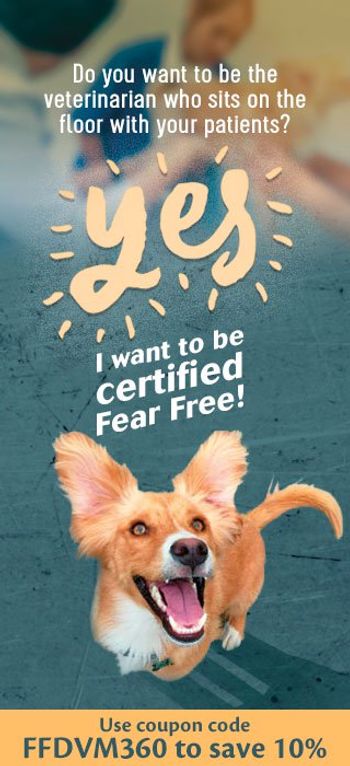
This cardiologist wants to prove that the intense effects of the fight-or-flight "sympathetic storm" in pets from scary veterinary visits can wear out their hearts before their time.
John Lofflin is Veterinary Economics Special Assignments Editor, a journalism professor, and a freelance writer based in Parkville, Missouri.

This cardiologist wants to prove that the intense effects of the fight-or-flight "sympathetic storm" in pets from scary veterinary visits can wear out their hearts before their time.
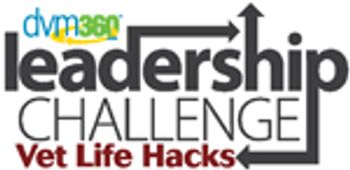
Is there a shortcut to personal change and transformation? These experts say veterinarians need to cut themselves some slackthen cut out their bad habits.

Veterinarians retain stake but focus exclusively on patient care.
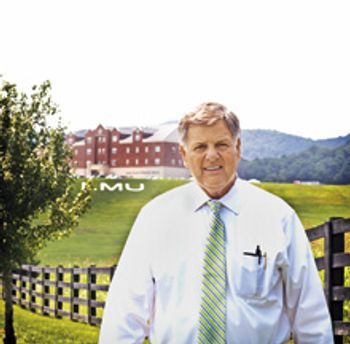
From a blue-collar background working summers in mining camps to the life of a successful entrepreneur, Pete DeBusk brings a combination of get-it-done attitude and business sensibility to the business of building a progressive school of veterinary medicine.

For some, Fear Free presented an obligation and an opportunity in the veterinary profession.

Natural disasters. Disease outbreaks. Terrorist bombings. When crisis hits, these veterinarians are on the scene.

According to one researcher, veterinarians' understanding of issues affecting global health is unmatched-which requires their involvement on the world stage.
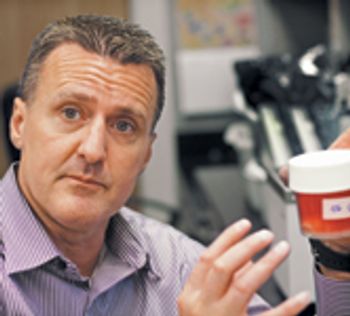
In the next few issues of dvm360, we're taking a close look at how veterinary medicine benefits people, not just animals. In this first installment, we meet a 'translational' (cross-species) researcher who's in the process of revolutionizing orthopedic medicine-for people and pets.

Research labs in veterinary schools everywhere are investigating diseases in dogs as they pursue healing both humans and pets.

Utlizing dogs can close the developmental time gap, save millions of dollars and protect canine lives.
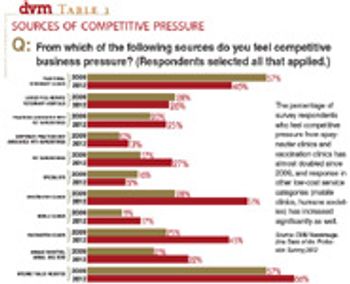
But some private veterinary practices have found ways to co-exist with public programs and charitable organizations.

Shawn McVey's offers advice for the veterinary practitioner who feels challenged by the low-cost alternatives.

Former senator, now working as an associate veterinarian in the practice he founded, reflects on changes in veterinary medicine – and mulls another foray into practice ownership.
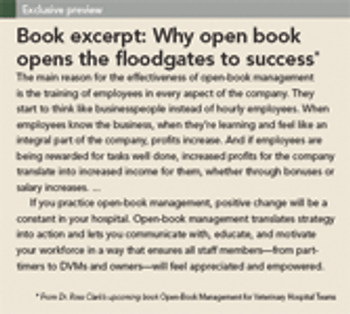
Dr. Ross Clark has built a legacy on open-book management.

New veterinary practice owners have big shoes to fill-only it might be team members filling out those size 12s. Don't miss out on your next potential partners: your own employees.

Three veterinary team members who are or have been part-owners reveal the challenges, benefits, and strategies for making it work.

If compensation has put the squeeze on your practice, take a look at your doctors' slice.
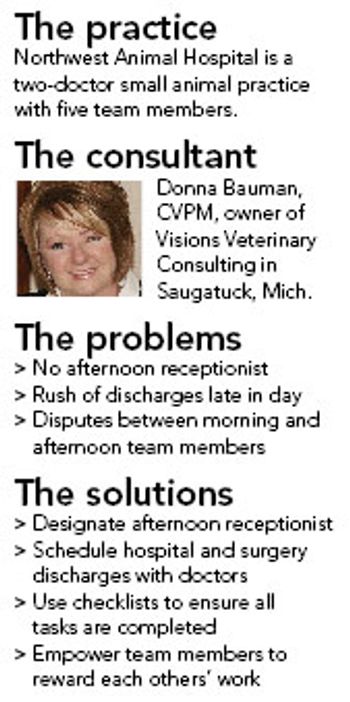
Practice Management Overhaul winners reveal what they've learned throughout the process and how it's transformed their practice.
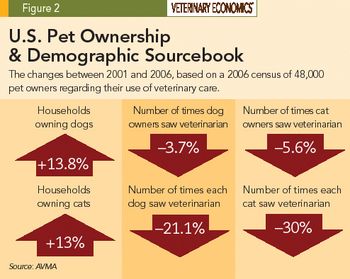
Studies show the number of visits pet owners make to their veterinarian is declining.

You've decided to expand the horizons of your practice, accept the mantle of the primary care veterinarian, and become part of a network of colleagues-responding to the health care needs of pets with the best care possible.

Present day veterinarians have evolved from human islands to networks of people-treating pets in concert, making the most of the rapidly expanding body of knowledge that is veterinary medicine, and reqiring the schematic of private practice to harness a healthy array of specialties in service to clients and pets.

Communication is an essential element of the relationship among primary care veterinarians, specialists, and clients.

Although the statistics vary, estimates suggest that three to four million animals are euthanized in U.S. animal shelters every year.
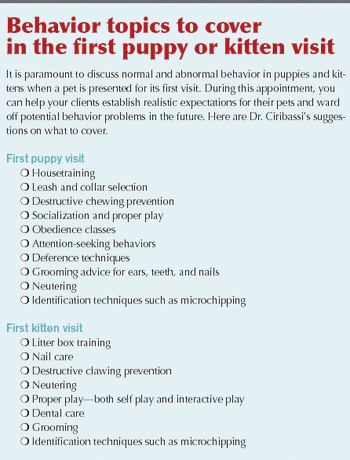
Misbehaving is the most dangerous thing a companion animal can do.
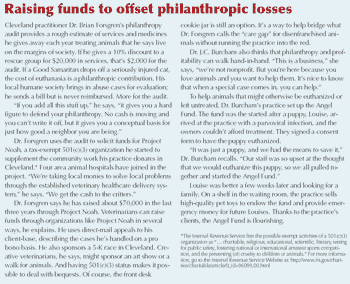
On a hot Sunday morning in July, J.C. Burcham, DVM, and a colleague neuter 79 cats at a local animal welfare organization. Dr. Burcham, who practices in a large veterinary hospital in Olathe, Kan., knows firsthand about relinquishment and euthanasia.
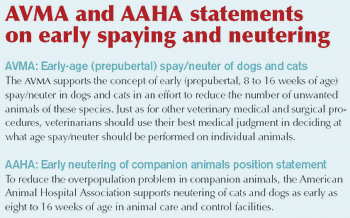
Shelters can adopt out only so many animals, says Kate Hurley, DVM, MPVM, director of the Koret Shelter Medicine Program at the University of California, Davis. So the biggest impact on euthanasia numbers will be on the intake side of the equation, not the adoption side.
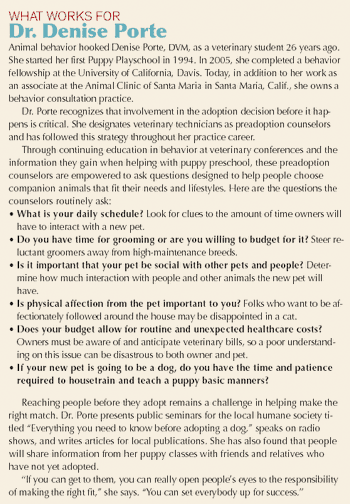
Although it is obvious to veterinarians that a Border collie and a 96-year-old woman likely make a poor pet-owner match, it may not be obvious to a potential owner who has never been around Border collies. Indeed, one reason healthy animals wind up in shelters, says Gail Golab, PhD, DVM, American Veterinary Medical Association (AVMA) interim director for animal welfare, is because people "acquire a pet with an expectation the pet doesn't fulfill."
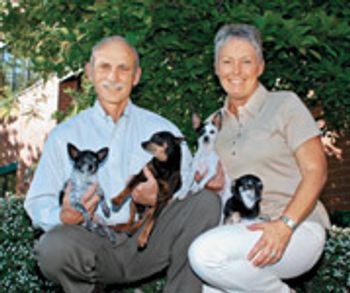
After 25 years in the U.S. market, this leader talks about the potential for pet insurance.
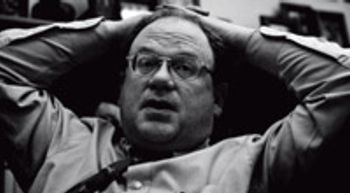
How the CEO of Banfield has rewritten the rules of veterinary practice. ... Part 1 in The Change-Makers Series
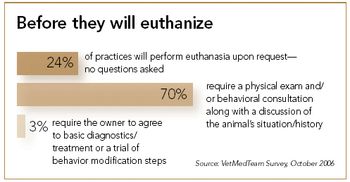
Saying goodbye is never easy. And you face this undeniable fact of life every day. The upside: You're in a position to ease your clients through the grieving process and help them celebrate the pets they love.

Published: November 1st 2013 | Updated:

Published: May 1st 2010 | Updated:
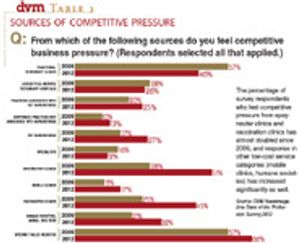
Published: October 1st 2012 | Updated:

Published: September 21st 2012 | Updated:

Published: August 1st 2012 | Updated:

Published: January 1st 2011 | Updated: